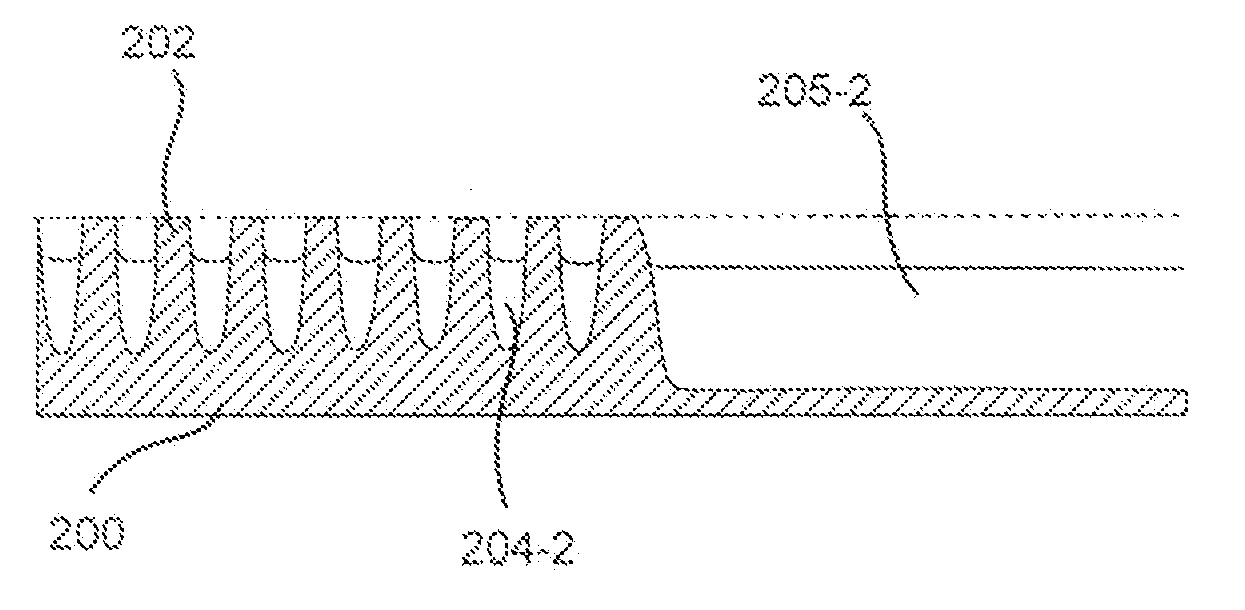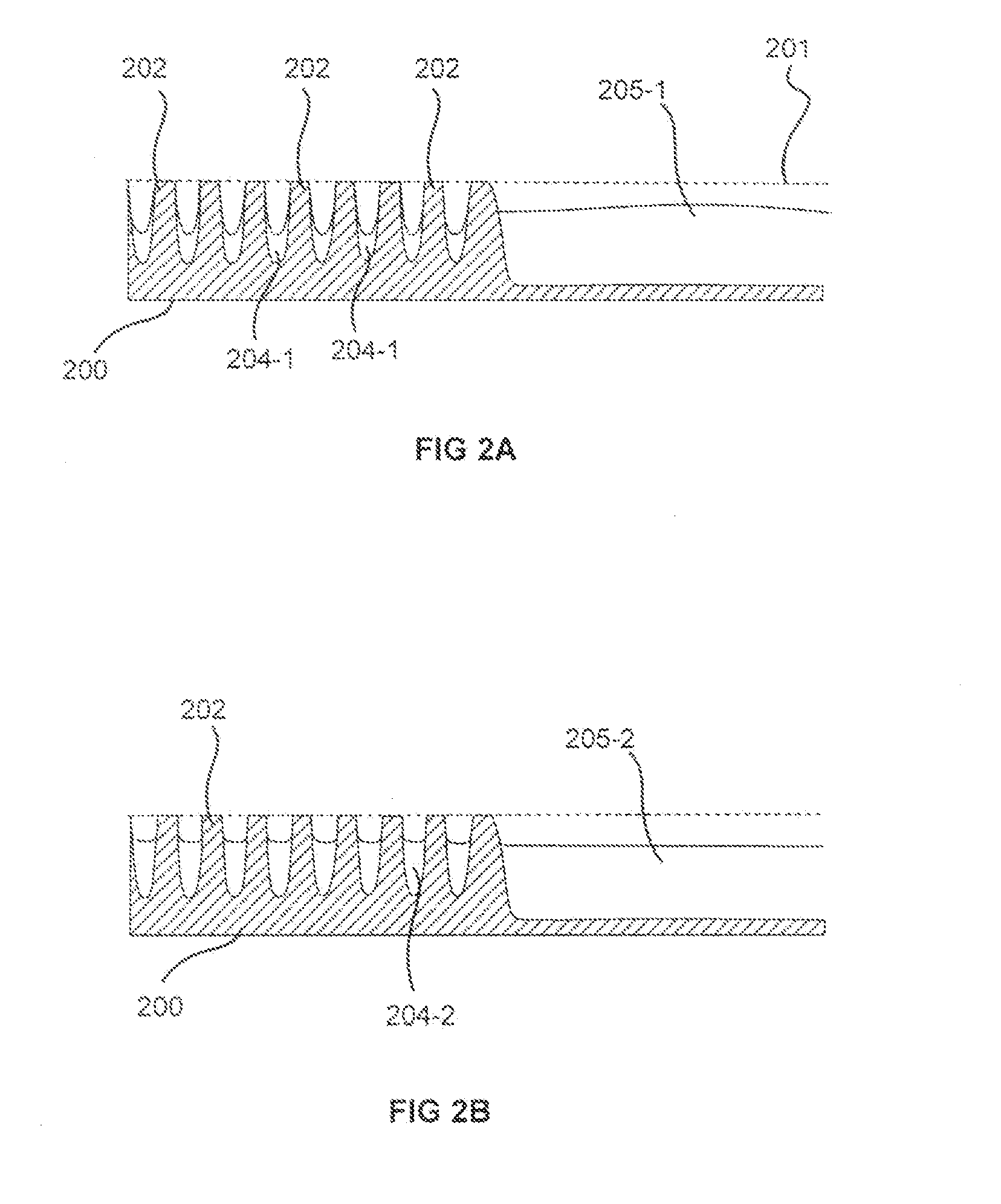Post-planarization densification
a densification and planarization technology, applied in the field of post-planarization densification, can solve the problems of dielectric material, dielectric material, and structural features of the device having decreased spatial dimensions, and achieve the effect of reducing the pattern loading effect, facilitating densification treatment, and increasing the density of gap-filling silicon oxid
- Summary
- Abstract
- Description
- Claims
- Application Information
AI Technical Summary
Benefits of technology
Problems solved by technology
Method used
Image
Examples
Embodiment Construction
[0015]Processes for forming high density gap-filling silicon oxide on a patterned substrate are described. The processes increase the density of gap-filling silicon oxide particularly in narrow trenches. The density may also be increased in wide trenches and recessed open areas. The densities of the gap-filling silicon oxide in the narrow and wide trenches / open areas become more similar following the treatment which allows the etch rates to match more closely. This effect may also be described as a reduction in the pattern loading effect. The process involves forming then planarizing silicon oxide. Planarization exposes a new dielectric interface disposed closer to the narrow trenches. The newly exposed interface facilitates a densification treatment by annealing and / or exposing the planarized surface to a plasma.
[0016]Dielectric within a trench may possess different properties from dielectric within an open area (or a wide trench). This may result from the more restricted geometry ...
PUM
| Property | Measurement | Unit |
|---|---|---|
| width | aaaaa | aaaaa |
| width | aaaaa | aaaaa |
| width | aaaaa | aaaaa |
Abstract
Description
Claims
Application Information
 Login to View More
Login to View More - R&D
- Intellectual Property
- Life Sciences
- Materials
- Tech Scout
- Unparalleled Data Quality
- Higher Quality Content
- 60% Fewer Hallucinations
Browse by: Latest US Patents, China's latest patents, Technical Efficacy Thesaurus, Application Domain, Technology Topic, Popular Technical Reports.
© 2025 PatSnap. All rights reserved.Legal|Privacy policy|Modern Slavery Act Transparency Statement|Sitemap|About US| Contact US: help@patsnap.com



